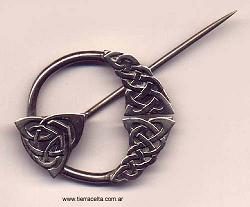 A pulley is a device designed to lift very heavy objects. This simple machine is based on Archimedes' principle, according to which from a point of support it is possible to move a body.
A pulley is a device designed to lift very heavy objects. This simple machine is based on Archimedes' principle, according to which from a point of support it is possible to move a body.
A pulley is nothing more than a grooved wheel that rotates around an axis. A rope passes through the channel that connects with the load to be lifted, while a certain force is applied at the other end of the rope.
The first pulleys were designed precisely by Archimedes in the third century BC. C for the purpose of facilitating civil and military engineering work.
How a simple pulley works
A simple pulley has a wheel in which there is a groove on its perimeter and said wheel rotates on a central axis. This pulley allows the direction and direction of the applied effort to be changed and the distance that the load travels is equal to the length of the collected rope. This type of pulley constitutes a lever with equal arms, since the first effort to pull the rope coincides with the weight of the load. In this way, it is possible to lift weights comfortably, with little effort and by moving an object to a certain height.
Other types of pulleys
When two pulleys are used it is called a movable pulley. In this way, one of them is fixed and the other is mobile. The mobile pulley is what moves the load when the rope is pulled and thus the effort is considerably reduced, specifically in the middle of the fixed pulley.
Compound pulley systems are sometimes used to move large loads with the least possible effort. These more complex systems are a combination of fixed and moving pulleys and are also known as hoists.
The different pulley systems allow a force to be multiplied as if it were a lever. Thus, the magnification of the lifting force or mechanical gain depends on the number of rope sections that support the load.

Other inventions attributed to Archimedes
In addition to the pulley system, Archimedes devised a method to calculate the volume of an object with an irregular structure or shape, as well as the famous Archimedean principle.
These theoretical advances allowed a whole series of inventions and gadgets of great practical utility, such as the Archimedean screw for engineering, the catapult as a weapon for war and a type of crane (the Archimedean claw) that was intended to sink enemy ships. These and other machines were decisive for the development of civil engineering and also for war.
Photos: iStock - Jon Faulknor / LunaMarina









